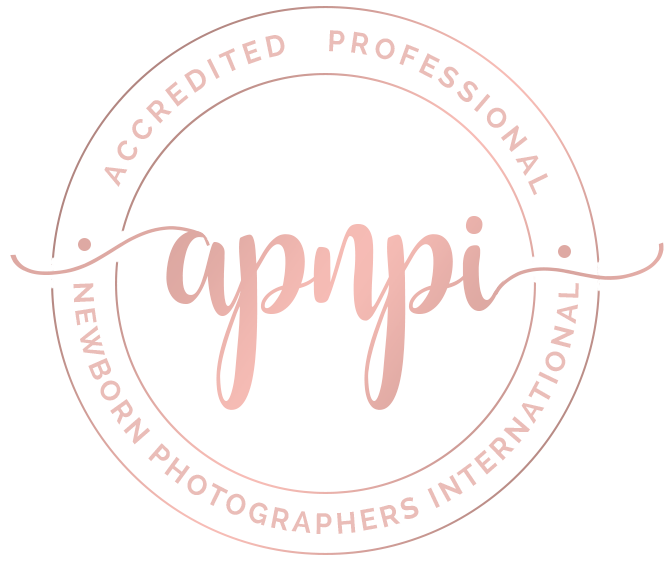Model Calls for Newborn Photographers
Which is the right type for you?
Written by: Katherine Katsenis
To me, newborn photography is a genre that either leaps out at you, or it doesn’t. I suppose this is true for any kind of photography, but I contend that newborn photography tugs at some of our heart strings a lot more than others.
To get going in newborn photography takes practice, and to practice, you need live models. Stand In Babies (SIBS) can only go so far. In this blog, I want to share with you the kind of model calls I used at various points in my 9 year career so far. My hope is this will give any newborn photographer some things to think about no matter how accomplished (or not) you are.

The Ethics of Newborn Model Calls
From the start, I always felt guilty asking to borrow a baby from new parents. Often, they have no idea what is involved in newborn photography; no idea that there is a short window for most popular poses. So, when I was super inexperienced, and was unskilled in how to pose, I felt that they were giving up a chance to get better photos by being my model.
You may be thinking, but some photos are better than none; that they likely had not planned on newborn photos anyway. I hope that was the case for those first 20 sessions I did as a total beginner.
My point is to be very upfront about your skill level. Let parents know that modeling for a beginning photographer can have its risks in terms of quality of imagery.
The Paid Model Call
While unpopular, this was the main kind of model call I used 9 years ago when I literally had a Canon Rebel T3 and a continuous light from Amazon. I paid my parents for their time. In Los Angeles, where I am based, I offered $75 an hour plus all edited images I created from the session. The advantage of this is that the parents are working for you and you are paying them. This takes pressure off having to try and do certain poses, or use props the parent wants.
The disadvantage is the cost. As a beginner, my sessions took F O R E V E R…up to 5 hours. So that cost me about $375 per session to practice. Another disadvantage is that this person you are paying will probably not be a contender to be a future paying client. I am not sure why, but in all my years never did a model ever hire me. So, it could be that you are not building a network or client base if you pay your models. This may not seem like a big deal, but down the line, it makes a huge difference if you slowly build up your marketing base. Having a starting list when you finally launch can help. By list, I mean emails, but also social media followers who will support you through comments and shares.
The Completely Free Model Call
This is what many people think of when they see the phrase “model call”. The photographer does 90% of the work and the model gets EVERYTHING (all images) for free.
The obvious advantage is that there is no out of pocket cost to you. However, these are some of the pitfalls I experienced with the F (free) word model call!
- A general lack of respect. Perhaps it was because I was a total beginner, my personality, or how I interacted with models, but I noticed that many of them did not respect my time, effort etc. Of course, I had some models who were just so grateful and courteous. Overall, I had more ghosted emails, more cancellations, and more no shows than any other type of model call. Again, I worked in Los Angeles, a large urban area with a lot of diversity in mores, languages, culture and so on. Communication can be difficult.
- HIgher Expectations: Free model call participants were more likely to ask for particular poses, props, colors or show me images on Pinterest that they wanted. Even though my contract explained this was a model call, that I had certain plans etc. This may not be a problem for you. In my case, I always had a certain plan for each baby based on age and I found being assertive difficult.
- No Financial Future: Models who got everything for free from you once, are highly unlikely to become a paying client. They will probably be happy to model for you again as their baby ages, so you can work on your sitter and cake smash skills. Having images of the same baby newborn to the first b day is good to have for your portfolio. Let go of these models ever paying you. Instead, use them to your advantage to build your portfolio
The Hybrid Model Call
As your skills improve, you will start to be on the hook for monthly bills (web site, CRM software, Bookkeeping, mentoring, education, dues and subscriptions,). You need money. The hybrid model call is for intermediate or advanced newborn photographers. Offer the session and X number of complimentary images. If they want to purchase more, they are X amount each.
You may be thinking, why would I need to do a model call if I am intermediate or advanced? Because trends, props, and gear changes. Sometimes, you need to stop and practice with that new lens, see if you like using a dog bed as a posing table, check out that new strobe etc. It is not a good idea to use these things for the first time at a paid session.
Using the hybrid model call, you can either bring your model back for an IPS session, or have them purchase additional images through your online gallery. This gives you a chance to practice your sales skills and client interactions. You can also start to get an idea about what kinds of products you may want to sell.
Gabby Chung has taken this model to it’s ultimate with her $1000 Model Call
I made $1000 a few times doing this. But overall, my sales numbers were a lot lower. Probably because my model was not my “ideal client” and my sales skills are wobbly. But for the right person, this model call type can work wonders on your bank account.
Final Thoughts On Newborn Model Calls
Model calls are a great way to practice, for sure. BUt if I were to offer any advice, I would say that you should have a mentor first BEFORE you start model calls. Why? So that you can make adjustments early. In my first year as a newborn photographer, I did 30 model calls in a summer. Sometimes 3 or 4 in a week. I barely had time to recuperate from one, and another came. Doing this caused some poor habits that were difficult to break.
I highly recommend debriefing after each session with your mentor. Craft a plan of the elements you want to work on for each session and stick to it. You will improve faster, and not have to do so many model calls like I did.
Have a written agreement in place with each model. For me, models had to sign a model release, that was part of the deal. I outlined exactly how many images, in what formats (low res, high res) they would get. This will save you when the model comes at you with, “But I thought we got ALL THE UNEDITED IMAGES TOO”. And believe me, they will ask you for them.
Now go forth and collect your models. Have a plan. Stick to it. Practice and keep going. Some calls will be easy, some harder. Keep going. Cry and bask in Imposter Syndrome, but keep going. Keep going. Then one day, you will wake up and realize, “Hey, I made it. I’m an accomplished newborn photographer!”

